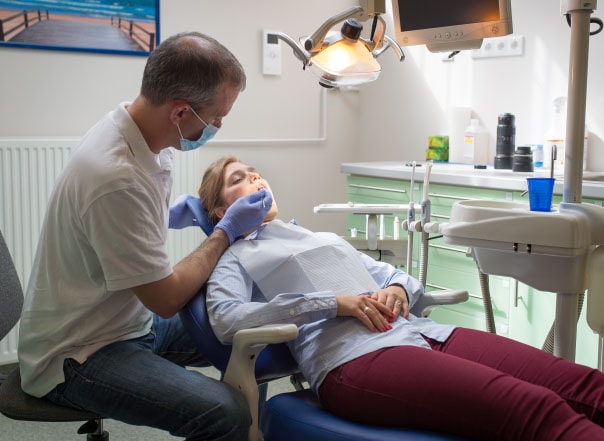Dental treatments carry risks and side effects just like any other medical act. What are the allergic symptoms during the process that need immediate attention, and how can future occurrences be prevented? Find out the answers in our article below.
According to the latest statistics, 30 to 40 per cent of the world’s population is suffering from some kind of allergy. It is an excessive reaction of the body to certain substances called allergens, which normally would not provoke any symptoms.

Along with all other types of hypersensitivity, allergic reactions during dental treatments are also becoming more frequent. These can be grouped into two types, based on the immediacy of their occurrence. Immediate reactions during a dental session are mostly caused by medicines or tests, while delayed reactions are generally induced by metals, used in dental implantation or fillings.
Substances Provoking Immediate Symptoms in Dentistry
Immediate reactions are mostly caused by medicines used during dental treatments. These include local anaesthetics, disinfectants, and medicines used for local treatments. Formaldehyde, mainly applied as an antiseptic and the anaesthetic lidocaine are the two substances most widely known for their irritant and allergenic properties. Colophony, a material found in impression materials and polishing pastes is also linked to immediate allergic reactions. Eugenol, contained by treatment agents and zinc-oxide cements, is well-known to bring about hypersensitivity in some patients. Last, but not least, light curing white filling materials are also prone to induce unwanted reactions, sometimes in only a few hours following the treatment.

Symptoms to Watch
The first symptom of an allergic reaction a short time after a visit to the dentist is mostly some kind of oedema in or around the place of the treatment. If the oedema seems to spread, rashes appear all over the body, there is difficulty breathing or the mouth and eyes are swollen, the life of the patient might be in danger. Thus, immediate first aid and a visit to the closest hospital are warranted.
How to Eliminate Immediate Allergic Reactions in Dentistry?
Prevention is a useful solution to avoid such allergic reactions. Before visiting the dentist, especially, if the patient has a history of hypersensitivity, epicutan or patch tests are recommended to make sure there is no existing allergy against one of the medicines used during dental treatment. If there is, a wide range of medicines are available as substitutes.

